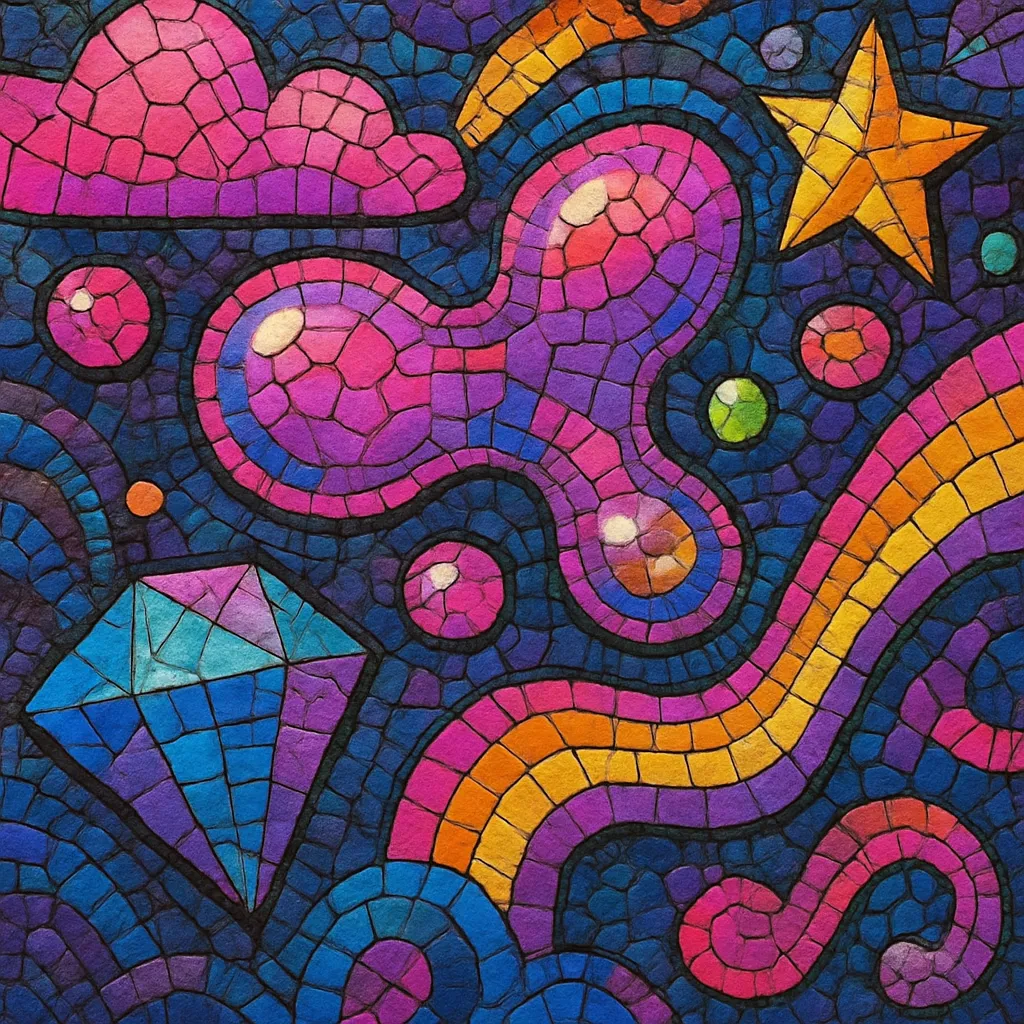Hyperpop is an internet-native pop movement known for its maximalist sound design, pitch-shifted vocals, and frenetic genre collisions. It exaggerates pop tropes—ultra-bright synths, hard-clipping drums, sugary hooks—then smashes them together with elements of club music, trap, and experimental electronica.
The style favors hyper-synthetic timbres, extreme processing (auto‑tune, formant shifting, heavy sidechaining, distortion), and abrupt structural left turns. Lyrically, it swings between irreverent internet humor and disarmingly sincere confessions, often reflecting online identity, queerness, and hyper-modern life. Although diverse, the common thread is a playful, self-aware push of pop to surreal, high-saturation extremes.
Hyperpop emerged from online music circles and the UK’s PC Music milieu, where producers like A. G. Cook, Danny L Harle, Hannah Diamond, and GFOTY amplified bubblegum pop aesthetics with glossy sound design and subversive internet-era irony. In parallel, SOPHIE’s breakout singles in 2013–2014 (e.g., “Bipp,” “Lemonade”) crystallized a plastic-y, tactile club-pop palette—rubbery bass, bright transients, and extreme vocal processing.
Charli XCX’s Vroom Vroom (2016) and later projects with PC Music alumni introduced the sound to wider pop audiences, demonstrating how hyper-synthetic club textures could intertwine with chart-ready songwriting. By the late 2010s, the term “hyperpop” circulated widely online—popularized in part by streaming playlists—becoming an umbrella for maximalist, internet-forward pop and adjacent sounds.
100 gecs’ 1000 gecs (2019) propelled hyperpop’s chaotic, meme-aware sensibility into a global conversation, blending pop hooks with noise, ska, dubstep, and nightcore acceleration. Around the same time, a new wave of teenage producers and singers (glaive, osquinn, ericdoa, underscores, among others) formed a loosely knit, Discord- and TikTok-powered micro-scene often labeled “digicore,” expanding hyperpop’s emotional range and DIY ethos.
As hyperpop aesthetics spread, they influenced rap (glossy, synth-forward beats), indie electronic, and mainstream pop’s approach to vocal processing and dynamic contrast. The community also mourned the loss of SOPHIE in 2021, whose innovations remain foundational. Today, “hyperpop” functions both as a sound—maximalist, processed, genre-fluid—and as a networked culture of artists who treat pop as a malleable, high-intensity playground.
Use bright, synthetic timbres: wavetable or FM leads, rubbery sub-bass, metallic percussion, and glossy pads. Embrace heavy processing—hard clipping, saturation, OTT multiband compression, and aggressive sidechain ducking—to achieve a punchy, plastic sheen.
Write hook-centric melodies with clear, earworm motifs. Chord progressions often borrow from mainstream pop (I–V–vi–IV, IV–V–vi–iii) but can pivot suddenly via key changes, modal shifts, or surprise borrowed chords for “sugar rush” contrast.
Common tempos range from 120–160 BPM. Mix four-on-the-floor club feels with trap hi-hats or half-time switch‑ups. Structure is flexible: abrupt drops, micro-breaks, and fake-outs keep energy volatile. Don’t fear whiplash transitions—use risers, reverse tails, and stingers.
Employ pitch-shifting and formant manipulation, layered harmonies, and liberal auto‑tune. Alternate between cute, hyper-sincere, and tongue‑in‑cheek tones. Lyrics often blend internet vernacular with personal vulnerability; juxtapose playful bravado and raw confession.
Any modern DAW works; popular tools include Serum, Massive X, Vital (synths), OTT, CamelCrusher, vocoders, Melodyne, Little AlterBoy, and distortion suites. Build from a strong chorus, then design sound around it—hyperpop is hook-first and sound-design-forward.


